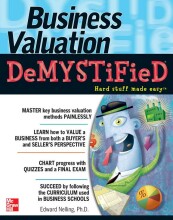An Overview of Financial Statements
13 important questions on An Overview of Financial Statements
What is net working capital?
What is the difference between historical cost and fair value on the balance sheet?
Explain what the income statement looks like.
COGS (incl. labour, material, and other expenses directly related to its products)
Gross profit
SG&A expenses (incl. executive salaries, marketing expenses, and other items not directly tied to its productions process)
Operating profit (income from operations or EBIT)
- Higher grades + faster learning
- Never study anything twice
- 100% sure, 100% understanding
What is depreciation, where is it stated, and why is it seen as a non-cash expense?
Which method is commonly used to calculate depreciation and amortization in financial reports?
What is the net book value on the balance sheet?
What is the calculation of basic earning per share (EPS)
What do the operating activities include? Does this activity include interest expense?
What do the investing activities include?
- Long-term assets (incl. capital expenditures)
- Securities (bonds, common stock, derivatives) issued by other companies
What does the 'burn rate' mean? How can it be calculated? What can a company do about it?
It can be calculated by adding operating and investing cash flow.
- A company could increase its operating cash flow.
- A company could decrease its investing cash flow.
- A company could finance the gap by using financial cash flows.
For example, if the operating CF is -$37 million, and investing CF is -$57, the burn rate is -$94.
How do we evaluate a balance sheet?
- Identify the company's most significant assets and liabilities.
- Determine if accounting values accurately represent the 'economic' or 'financial' value of the assets and liabilities.
- Compare the relative size of the company's assets.
- Financial risk.
- The level of debt.
- The maturity of debt.
How do we evaluate the cash flow statement?
- The burn rate.
What is 'net change in cash'?
For example: $28 billion + (-$11 billion) + (-$15 billion) = 2 billion net change in cash
The question on the page originate from the summary of the following study material:
- A unique study and practice tool
- Never study anything twice again
- Get the grades you hope for
- 100% sure, 100% understanding






























